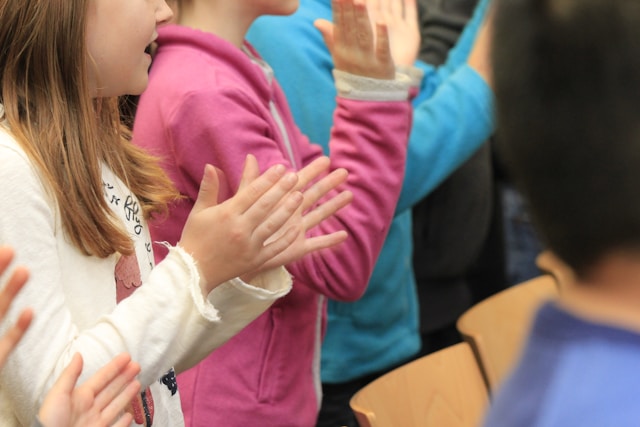
Foundational Skills & Mindset: Teaching Times Tables Effectively (Rote Learning)
At James An College Eastwood, we understand that mathematics is more than just numbers—it’s a crucial life skill that empowers children to navigate the world with confidence. One of the most important foundational skills in maths is multiplication, and that’s why teaching times tables effectively is essential for long-term academic success. Multiplication supports learning in division, fractions, and algebra, yet many children find it frustrating, especially when memorisation feels tedious or overwhelming. As a parent or caregiver, you might wonder how to make this process easier and more engaging at home.
The great news? Teaching times tables effectively doesn’t have to be a chore. With the right strategies, multiplication can be engaging, rewarding, and even fun! By integrating hands-on activities, real-world applications, and brain-friendly learning techniques, children can develop both fluency and confidence in multiplication. While repetition plays a role in retention, it’s how we approach it that makes all the difference. Creating an enriching and dynamic learning environment can turn what once felt like a challenge into an exciting opportunity for growth.
At James An College Eastwood, we’ve found that teaching times tables effectively starts with familiarity and engagement. Here are some proven strategies that help children build fluency through fun and repetition.

Making Multiplication Familiar and Approachable
Familiarity is the first step toward mastery. When children encounter multiplication in a way that feels natural and accessible, their confidence grows. At James An College Eastwood, we integrate these strategies into our personalised programs to help children thrive in maths. Here are some effective strategies to support this process:
Visual Learning Tools: Bright, structured visuals like multiplication charts and flashcards reinforce learning through constant exposure. Placing a colourful multiplication chart in a study space, such as a bedroom wall or desk area, allows children to absorb information effortlessly over time.
Interactive Flashcards: Moving beyond traditional cards, incorporating images, arrays, or puzzle-based flashcards adds an element of discovery, making practice feel like an engaging challenge.
Hands-On Materials: Let children create their own learning aids using stickers, dry-erase boards, or even window markers. Engaging multiple senses strengthens both memorisation and comprehension.

Engaging the Senses Through Music and Movement
Music is a powerful memory aid, and incorporating rhythm and melody can make multiplication facts stick effortlessly.
Multiplication Songs: Setting times tables to familiar tunes or catchy rhythms turns practice into an enjoyable activity. Whether through nursery rhymes or popular melodies, music helps solidify recall.
Movement-Based Learning: Encouraging children to clap, dance, or jump as they recite multiplication facts strengthens memory through kinaesthetic learning, making the experience more immersive.

Turning Learning into Play
Children learn best when they’re having fun. Playful, game-based learning removes the pressure from memorisation and encourages engagement.
Multiplication Bingo: Create bingo cards with products and call out equations for children to solve and match.
Dice Games: Rolling two dice and multiplying the numbers provides quick and exciting practice. Adding a tallying system can create a competitive challenge, especially when another player is involved.
Digital Learning Platforms: Websites like Mathletics and MathsOnline provide game-based learning that allows children to practise at their own pace while reinforcing key concepts through repetition and reward.

Strengthening Retention with Brain-Based Strategies
When teaching times tables effectively, understanding how the brain retains information makes all the difference. At James An College Eastwood, we use research-backed strategies like the spacing effect and active recall to support long-term retention.
- The Spacing Effect: Research shows that spreading practice over time is far more effective than cramming. Just 10 minutes of multiplication practice daily is significantly more beneficial than an hour-long session once a week.
- Active Recall: Encouraging children to actively retrieve information rather than passively reviewing it strengthens memory retention. Some effective methods include:
- The Chunking Method: Breaking times tables into smaller, manageable sets (e.g., focusing on 2s, 4s, and 8s first) makes learning feel less overwhelming and reinforces patterns.
- Verbalising Thought Processes: Having children explain their reasoning aloud deepens understanding and builds problem-solving skills.
- Incorporating Movement: Reinforcing learning with physical activity, such as hopping or clapping while reciting facts, engages multiple senses and enhances recall.

Celebrating Progress and Building Confidence
Every child’s learning journey is unique, and adapting strategies to their strengths fosters a positive experience. By making multiplication practice a celebration of progress, teaching times tables effectively becomes a source of joy and pride. This mindset is part of what we foster at James An College Eastwood, helping children view learning as an empowering experience.
Key Takeaways
- Familiarity and Visual Learning: Use charts, interactive flashcards, and hands-on materials to create a supportive learning environment.
- Music and Movement: Leverage multiplication songs and kinaesthetic activities to enhance memory.
- Game-Based Learning: Encourage engagement through games like bingo, dice challenges, and digital platforms.
- Brain-Based Strategies: Implement spacing and active recall techniques to strengthen retention.
- Celebrate Progress: Focus on building confidence rather than speed, in order to make learning an enjoyable experience.
At James An College Eastwood, our maths curriculum incorporates these memory-boosting methods daily. Our goal is to ensure every child builds a strong foundation by teaching times tables effectively in a way that is both structured and enjoyable.
Moving from repetition to retention requires creativity, patience, and consistency. By embracing a variety of strategies and creating an encouraging learning environment, you can help your child build a strong foundation in multiplication—one that will serve them well both in the classroom and beyond.
Ready to Take the Next Step?
At James An College Eastwood, we understand the importance of building strong foundational skills early on—especially when it comes to teaching times tables effectively. Our programs are designed to support students through engaging strategies that develop fluency, memory, and confidence.
📘 Explore our tutoring programs:
- 🌱 Primary School Tutoring – Build strong foundations in numeracy, literacy, and problem-solving from an early age.
- 📚 High School Tutoring Programs – Equip your child with essential skills to thrive in Years 7–10.
- 🎓 HSC Preparation Courses – Get tailored academic support during the most important years of schooling.
Whether your child is in Year 1 or preparing for the HSC, our personalised approach ensures they gain the confidence and skills they need to succeed.
👉 Book your free diagnostic assessment & consultation today and give your child the tools to succeed—now and into the future.
